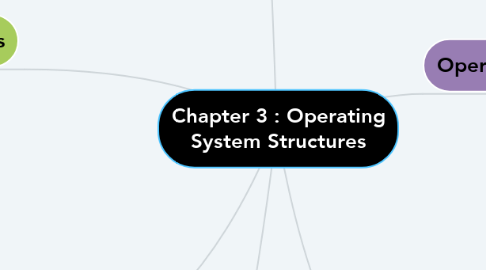Chapter 3 : Operating System Structures
저자: Tan Zi Jian


1. Operating System Services
1.1. User interface
1.2. Program execution
1.3. I/O operations
1.4. File-system manipulation
1.5. Communications
1.6. Error detection
2. Additional Operating System Functions
2.1. Resource allocation
2.2. Accounting
2.3. Protection and security
3. System Calls
3.1. Types of system calls
3.1.1. Process control
3.1.2. File management
3.1.3. Device management
3.1.4. Information maintenance
3.1.5. Communications
3.1.6. Protection
4. Layered Approach
4.1. Layers (levels) of operating system
4.1.1. Lowest layer (layer 0) - hardware
4.1.2. Highest layer (layer N) - user interface
4.2. Modularity selected layers
4.2.1. Uses functions (operations)
4.2.2. Services of only lower-level layers
5. Microkernel
5.1. Benefits of microkernel organization
5.1.1. Extensibility
5.1.1.1. Addition of new services
5.1.2. Flexibility
5.1.2.1. New features
5.1.2.2. Subtract existing features
5.1.3. Realiability
5.1.3.1. Modular design
5.1.3.2. Small microkernel rigorously tested
5.1.4. Portability
5.1.4.1. Port system to a new processor
6. Operating System Design
6.1. Design and Implementation of OS not "solvable" .
6.2. Start by defining goals and specification
6.3. Design of the system
6.3.1. Choice of hardware and type of system
6.3.1.1. Batch
6.3.1.2. Time shared
6.3.1.3. Single user
6.3.1.4. Multiuser
6.3.1.5. Distributed
6.3.1.6. Real time
6.3.1.7. General purpose
